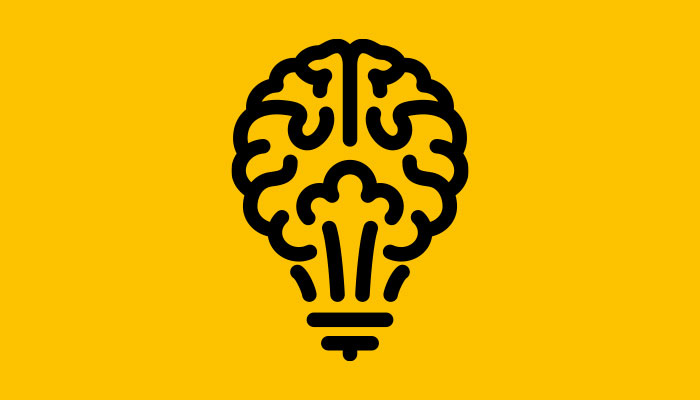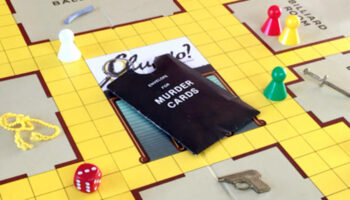Introverts, Extraverts and Inventing

Which personality type is more useful for a career in toy and game invention? Inventors share their thoughts…
Ron Dubren, Inventor, Ron Dubren & Associates
Introverts have a leg up on the creative inventing side. They’re less likely to be distracted by social life and obligations, and very much enjoy introspection, analysis and problem solving. Extraverts do well on the selling side. You need over-confidence, persistence and a thick skin. I found that to prosper as a toy inventor, I have to wear both hats.
Matt Nuccio, President, Design Edge
Both introverts and extraverts can excel as toy or game inventors. Introverts may thrive in the creative solitude of idea generation, independent brainstorming, crafting intricate designs and diving deep into details. Extraverts might excel in pitching concepts, collaborating with others, networking, presenting ideas with enthusiasm, and navigating collaborative projects. A balanced approach that incorporates the strengths of both personalities can lead to success by adapting to different aspects of the toy and game industry.
Fi Murray, Founder, Making Things Studio
I read a study recently that showed ‘extraversion’ is powered by the hormone oxytocin, meaning – essentially – that warmth, trust and emotions can power your personality in any given moment. Oxytocin levels can affect how we perceive ourselves and how extraverted we are in social settings. For example, I feel confident, energised vibes after a pitch that’s been met with excitement, open arms and praise. It’s a huge oxytocin hit! But if met with coldness, or a lack of interest or passion – especially from someone I don’t know very well – my ‘extraness’ would plummet, no matter the pitch resilience I’ve built up.
Over years of exposure to new situations, we find it easier to power up our extraness in times of need. Like a walking juxtaposition, I love tradeshows, pitch events, networking shows, but boy do I need a few calm, heads down, project-work days with my closest teams to counter it – a dopamine refuel!
Danielle Reynolds, Project Director, Wacky Wizard Games
Being an extravert has proven useful as an inventor. I have a large social battery, so I’m able to attend around 12 conventions a year without burning out. Thanks to my large network, I have an easy time recruiting playtesters. Being an extravert has helped me market myself – and my games – to more publishers, which has increased my likelihood of getting signed. I’ve had publishers tell me that they love signing a title with an inventor that will self-promote the game. The only downside to being an extravert is that I want to spend time with people outside of working in games and sometimes that’s hard to balance due to all the convention travel… I don’t give myself a lot of non-productive alone time. Plus, I get a drop in my mood after conventions. It’s something that, as an extravert, I’ve learned to balance so I stay mentally healthy.
David Snow, Owner, The Fantastic Factory
Both personality types can do very well in inventing. It’s more important to be confident in your pitch and the reasons why your invention should be considered by companies. If your confidence is high, this comes across in the pitch. As you get to know companies, you can adapt your style to suit each inventor relations person. This comes with time, and time is on your side as an inventor.
Westley Ciaramella, Partner, Catapult Concepts
Being extraverted has been key to my success! Some of my closest friends are in the toy industry. Late nights and extracurricular gatherings are nice breaks from the inventing grind!
Brendan Boyle, Associate Director, Fuse & Adjunct Professor, Stanford University
I vividly remember the time I had to deliver a speech in a high school assembly. Thankfully, I stood behind a podium because my knees were literally shaking; knocking back and forth. At that time, I was mostly an introvert when facing crowds… But being the sixth out of seven siblings, I was also a bit of an extrovert, always seeking attention from my parents and siblings.
I started teaching at Stanford the year after I graduated with my MS degree. I still recall the nervousness before my first class. Although I was confident in the content, speaking in front of 60 students terrified me. I wore a tie and a sport coat to distinguish myself from the students, despite being close to their ages. Fast forward a few decades of teaching, being in front of a group now feels natural – and through play and engagement, my classes are well-received. I now feel like an extrovert, but this feeling comes from practice and repetition. The comfort of being in front of groups, I believe, has boosted my confidence in pitching new toy concepts to companies.
Klutz Press founder John Cassicy and I co-authored the book ‘The Klutz Book of Inventions’. We had a blast on this project and the book sold over half a million copies. When brainstorming ideas with the team that were either “Ridiculous or Brilliant”, we developed a technique that is particularly helpful for introverts. Here’s a brief description: start with awarm-up exercise, then introduce the brainstorm question. Now, here’s the twist – instead of immediately jumping into a brainstorm, allocate five to eight minutes for everyone to have ‘heads down’ time. During this time, everyone is quiet, individually sketching up a few ideas. This really empowers introverts on the team to have a voice in the creative session. Once the heads-down time is over, open the session to a full brainstorm… It’s amazing how many introverted ideas lead to something stronger!
For my creative extrovert friends, I coach them to experiment with being less extroverted. I suggest being a better listener. My friend and long-time colleague Fred Dust wrote ‘Making Conversations’ and I’ve been practicing several of Fred’s techniques – especially his ‘creative listening’ approach when receiving feedback.
I believe we all fall somewhere on the spectrum between extroversion and introversion. With a mindful and purposeful approach, we can gently guide ourselves into the present moment, fostering growth as inventors, designers and mentors. This intentional acknowledgment of our place on the spectrum allows us to tap into our creativity fully, and encourages meaningful development in our roles as innovators and educators.
–
To stay in the loop with the latest news, interviews and features from the world of toy and game design, sign up to our weekly newsletter here
























